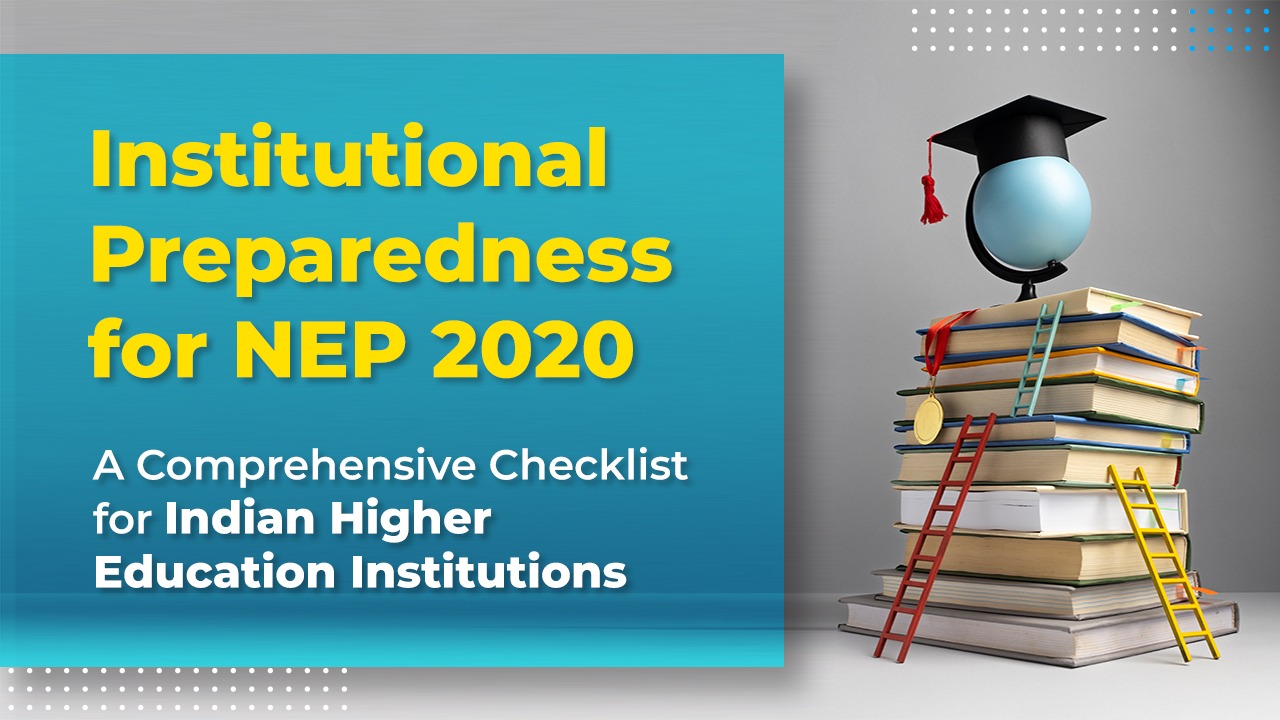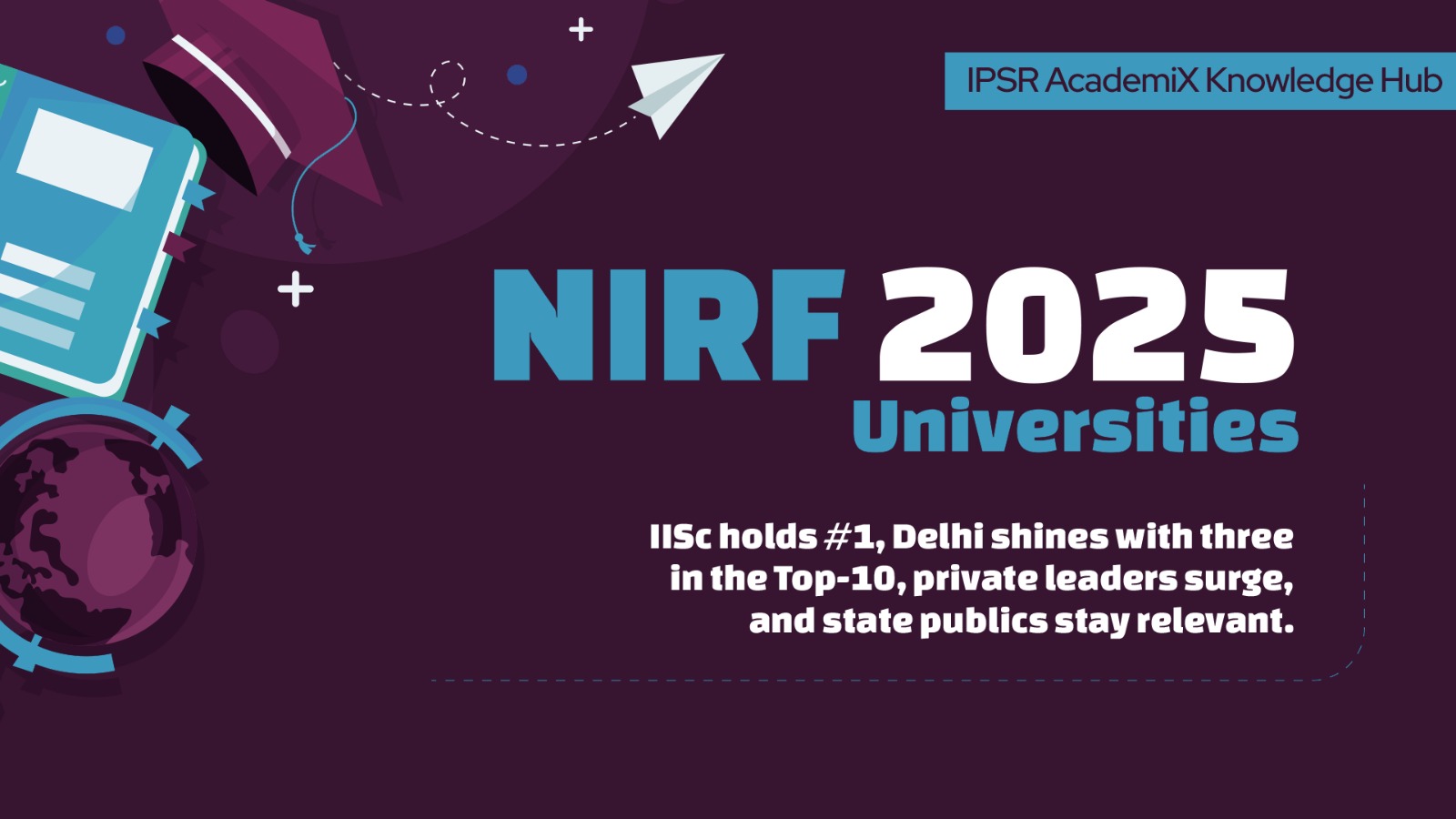
As per the National Education Policy 2020, higher education in India is poised for a transformational change. All Indian HEIs will be expected to achieve a number of milestones to ensure they are fully prepared for the rollout of NEP 2020. This is also a requirement for Accreditation.
When trying to get your institution ready to integrate NEP 2020, there are a lot of things to keep in mind. Don’t you wish there was a straightforward checklist for NEP preparedness so you could be sure you didn’t forget anything?
If you’re one of the many people in charge of institutional readiness for NEP 2020, don’t worry—we’ve got you covered. In this article, we’ll give you a comprehensive checklist of all the things you need to do to get your institute ready for NEP 2020. From policy changes to infrastructure upgrades, this post is specifically written for you. So read on!
One of the first steps towards the practical implementation of this policy, which has been mandated for all HEIs in the policy document itself, is the creation of an Institutional Development Plan (IDP).
The IDP is a documentary framework for designing competency-based education as outlined in the NEP 2020. This documentary framework, or IDP, is the blueprint for your institutional preparedness for NEP 2020. It establishes a time-bound roadmap describing the requirements, limitations, goals, and timetables for the execution of various NEP-2020 elements for a specific HEI.
IDPs should be created in consultation with various departments, centres, and schools of a university or college in order to achieve the best outcomes. It must be first created with a five-year time frame in mind, and the goals must be divided into short-, mid-, and long-term categories. These goals should also align with the NEP targets as mentioned in the NEP document.
Every department, centre, and school must do a “Constraints Assessment” in addition to their “Gap Analysis” and “SWOC Analysis,” which include an evaluation of their unique strengths, weaknesses, opportunities, and problems, in order to achieve their goals.
The departments, centres, and schools of colleges and universities can plan their actions in light of NEP-2020 in order to create a comprehensive and robust framework in the form of IDPs. This will help them to make sure they have cutting-edge academic infrastructure, including a technology-enabled learning ecosystem, needed for the efficient execution of teaching-learning activities and other NEP objectives.
Public funding for Higher Education Institutions (HEIs) is subject to the submission of Institutional Development Plans (IDPs) by HEIs. Once submitted, IDPs will not be full and final but can be periodically reviewed, revised, and resubmitted.
One of the most important things to do is develop an institutional policy and plan for NEP 2020 preparedness. This document will serve as a roadmap for the institute, outlining the steps it needs to take to be ready for the policy. Review your Institutional Development Plan (IDP). Make sure your plans reflect the new demands of NEP 2020 and are aligned with the objectives of your institution.
The checklist provided in this article will assist HEIs in this task. The following are some of the key areas that an institutional policy and plan should address:
It is important for Indian HEIs to develop a multidisciplinary/interdisciplinary approach in order to be better prepared for NEP 2020. This means that faculty members from different departments need to work together and share their knowledge and expertise in order to come up with a comprehensive plan that will address all aspects of the challenge. The goal is to develop a holistic approach that takes into account the unique needs of each institute.
Collaboration is key, and by working together, HEIs can build a strong foundation that will help them face the challenges ahead.
Things you need to include in your plan
Ideas you can use– Introduce vocational programs and community college programs apart from regular programs under the Choice Based Credit Semester System. Redesign academic programs to include multidisciplinary/interdisciplinary courses as electives and provide maximum flexibility for students to choose elective courses offered by other departments.
The Academic Bank of Credits (ABC) is an important part of NEP 2020 and is designed to give students greater flexibility in pursuing their academic goals. The ABC database allows students to collect, store, and transfer credits earned through different streams like college-based programmes, apprenticeships, multiple entry and exit points, technology-enabled virtual mobility, etc.
Students can choose the credits they wish to accumulate in the database according to their aspirations without being restricted by the duration of a degree programme or academic stream. This system also enables universities to recognise and appreciate the upskilling of students at their own will. The ABC database creates a holistic assessment of the students based on the credentials accumulated in it.
For successful implementation of ABC, HEIs need to create digital repositories for storing and issuing credits with comprehensive documentation, as well as infrastructure for peer-to-peer credit transfer between HEIs. They must also ensure that transparent evaluation protocols are set up for each type of credit being transferred into the database. Furthermore, universities must set up dedicated departments or committees for assessment, tracking, and management of student records in ABC.
Things you need to include in your plan
Ideas you can use: Instruct each student to sign up for the ABC portal. Redesign ERP to accommodate the requirement of multiple entries and exits. Encourage students to enrol in and complete courses under the Ministry of Human Resource Development (MHRD) like SWAYAM, NPTEL, etc. for added credits.
Broadly speaking, the New Education Policy 2020 includes initiatives and provisions that support vocational education. HEIs are expected to set up at least one vocational track, and 10–20% of the students should be enrolled in that programme.
To be ready for this, it’s important to have a well-developed skill development programme in place. HEIs should map out their skill development resource requirements, such as trainers, infrastructure, courses, and associated paperwork. They would also need to ensure that the curriculum is up to date with industry needs and that the course scheduler provides sufficient flexibility for students who wish to pursue part-time or multiple courses simultaneously.
Furthermore, HEIs should ensure that experience-based learning like internships and apprenticeships is an essential component of their educational offerings since this helps bridge the gap between theoretical knowledge and practical application. Some provisions of NEP 2020 also mandate skill certification criteria for students that take practical or vocational courses, so it’s important to keep this in mind while planning their skill development programmes.
Things you need to include in your plan
4. Enlist the institution’s efforts to:
5. Describe any good practice/s of the institution on skill development because of NEP.
Ideas you can use – Introduce Industry collaborated Value-added courses, Industry Internships and skill certifications like RHCSA, RHCE, CMA, ACCA and more in your institutions to make sure that by the time students finish their undergraduate programme they will be employable.
Another important point for Indian HEIs to consider is the integration of Indian knowledge systems into their overall NEP 2020 preparedness plans. With the implementation of NEP 2020, there’s an emphasis on bolstering India’s cultural legacies and ancient wisdom, which is why Indian knowledge systems must be included in college curricula and classrooms.
To make sure they’re meeting this requirement, HEIs must first review and modify existing course outlines to include a more holistic overview of India’s rich history, collective memory, values, and spiritual philosophy. They should also be sure to infuse Sanskrit, yoga, and Vedic knowledge systems more deeply into their curriculum.
By embracing the study of India’s past, HEIs can help ensure that students are knowledgeable of the culture in which they live and create a more inclusive learning environment for all. Even more importantly, integrating Indian knowledge systems into the college curriculum can bridge gaps between theories/practises from different cultures and foster a greater understanding amongst students from diverse backgrounds.
Things you need to include in your plan
Ideas you can use – Start accredited yoga training programmes or a course in Vedic Mathematics. You could start courses under the category ‘Understanding India’ like “Rivers of India” or “Monuments of India,” which will promote an understanding of Indian heritage.
Outcome Based Education (OBE) has been at the heart of the New Education Policy 2020, and this extends to Indian Higher Education Institutions (HEIs) as well. To be ready for OBE in your HEI, you must define clear learning outcomes for each of your courses, as well as create assessments to measure these outcomes accordingly.
Furthermore, you need to adopt student-centric teaching methods and provide students with access to a variety of resources that range from audio-visual materials to classroom simulations. This helps ensure that the educational experience offered by an HEI is more holistic and effective, and that the learning outcomes are being met. Additionally, you should also ensure that faculty members are properly trained on OBE-related processes such as assessment design and development.
Finally, it is important to put a process in place that allows for timely feedback on assessment results so that instructors can identify any areas for improvement. This will help keep your HEI up to date with NEP 2020’s standards for Outcome Based Education.
Things you need to include in your plan
Ideas you can use – Implement an OBE tool like deQ-OBE to introduce Assurance of Learning (AoL) in your institution to ensure that you are completely aligned with NEP goals.
Distance/Online Education
Online education has become the new normal, and it’s important to ensure your institute is well-equipped to provide quality education virtually.
To ensure that your institute is providing quality e-learning, here are a few things to consider:
Things you need to include in your plan
Ideas you can use – You can implement Moodle or any other LMS or offer MOOC courses in your institution to promote a blended learning system of learning. Again, assignments, quizzes, surveys, and assessments can be offered online.
Now that you are aware of the impending policy changes, it is important to take the necessary steps to ensure your institution is ready. Here is a list of things to help you get started:
Join us for FREE to get instant email updates!

Simplifying CO–PO Mapping in Outcome-Based Education Accreditation by the National […]

The National Institutional Ranking Framework (NIRF) 2025 results are out, […]

What the Top 100 Rankings Reveal About India’s Universities The […]

Exploring patterns, trends, and the evolving landscape of technical education […]

Release date: September 4, 2025 Source: NIRF portal’s Overall Top-100 […]
Informative
Very innovative and useful information
All that Institutions should know has been discussed in a simple language.Excellent.
Usefull
An excellent comprehensive point-wise preparedness report …Useful for colleges and departments of universities…Congratulations..
Very Useful, Informative and Innovative